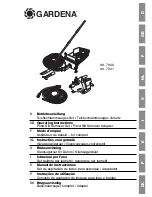
19
Repeat the previous steps on marking the Pool Layout in order to recreate the layout inside the
excavation area. Remember to leave the 2½' over dig as working space and brace the ledge.
This layout needs to be accurate as it will decide the exact position of the pool. Use rebar stakes
and paint or flour to mark the outline of the pool.
Usually, the last stage of excavation involves
digging the hopper (the deepest part of your
pool). Hoppers vary in width, length and depth
and should be dug according to the dimensions
on the dig specification drawing. Generally,
installers drive stakes at the hopper corners,
transition points and pool wall corners and
connect string to them at this time. The string is
set at the height of the intended finished grade.
Remember, if the pool is to be used for diving,
the finished dimensions must conform to
applicable codes and standards.
While digging the hopper, the excavator can trim the hopper walls to the proper slope as the
final depth of the hole is reached. The excavated depth of the hopper is 4½" deeper than the
finish dimensions of the pool. This allows for 2" of sand/vermiculite pool base on the bottom
and the 2½" coping (actual coping height can vary. You should measure the actual height of the
coping supplied with your kit).
IMPORTANT!
Be careful not to dig into the area
outside of the string to avoid an
undercut of the 2' ledge. Doing so
will remove the supporting ledge
for the pool wall panels.
















































